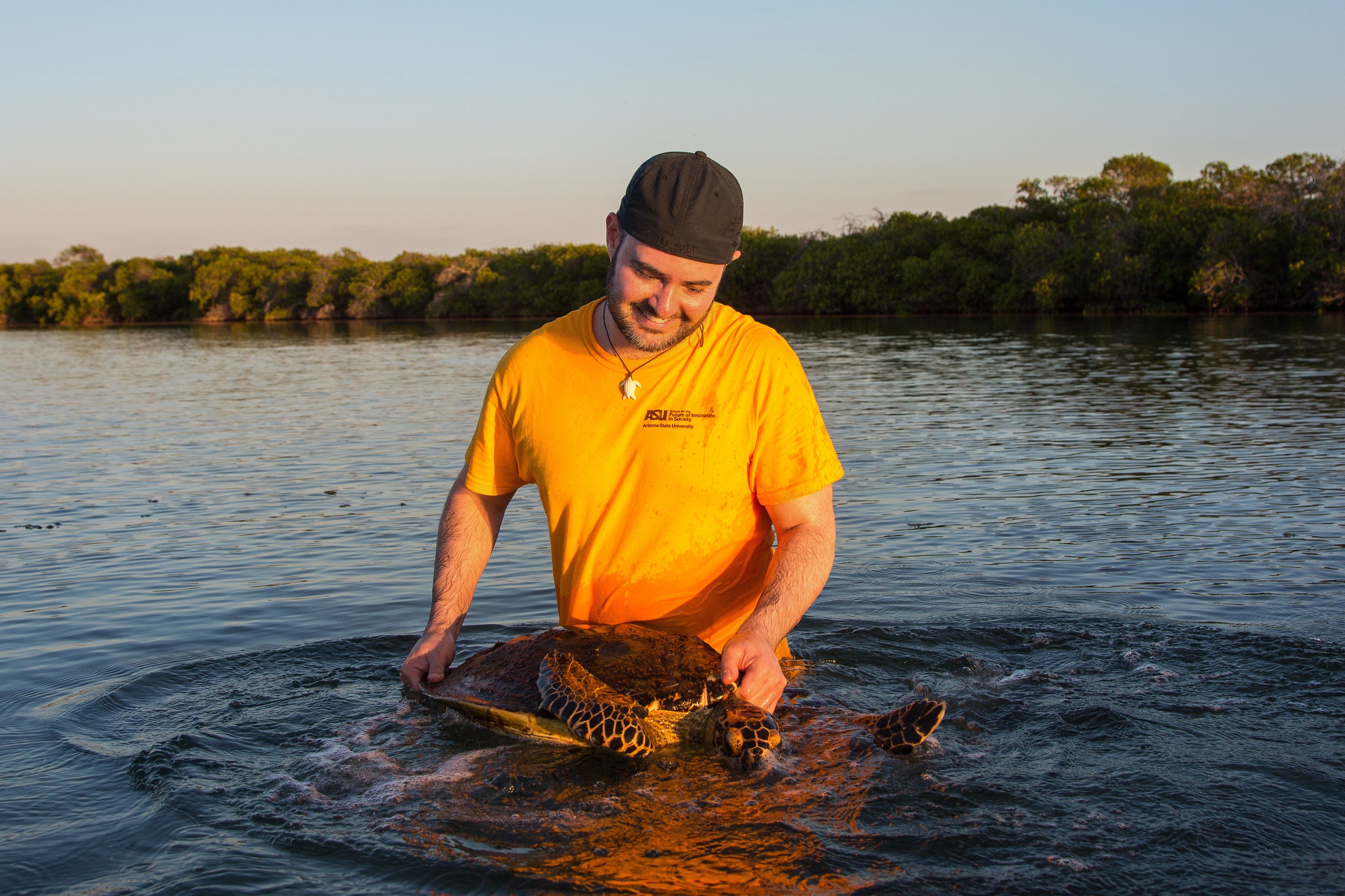Do sea turtles canoodle?
They do, according to a study published this month by an Arizona State University marine biologist.
Until now, sea turtles have been seen as unsocial animals, other than courtship and mating.
But Jesse Senko came across an unusual collection of video footage filmed by an independent naturalist off the coast of Maui, Hawaii, which shows turtles nuzzling and swatting at each other like cats.
“Nobody else has found any,” Senko said.
When Senko, an assistant research professor in the College of Global Futures at ASU, analyzed the footage, he found 149 instances of social behaviors across four hawksbill turtles— three adult females and one juvenile.
“That really changes the paradigm,” he said. “They were not viewed as social animals. ... We don’t observe them that much in the wild.”
Head touching was the most common behavior observed, while biting was the least common.
"(The head touching) sometimes lasted several minutes and involved turtles rubbing the sides of their faces together, swiping their beaks in a gyrating motion, or pumping water in and out of their mouths and noses,” Senko said. “The latter behavior pushes water past their chemosensory organs, which may allow the turtles to smell and thus recognize each other."
Video courtesy of Don McLeish
Why this behavior has never been observed before is simple: Sea turtles usually avoid people. But turtles have been protected in Hawaii for so long they no longer fear humans. The water is also crystal clear, making observation easy.
It wasn’t a scientist who filmed the behavior. All the footage from the study was shot by independent naturalist Don McLeish while snorkeling in Maui.
"This study highlights how engaged citizens can make extraordinary observations that would otherwise remain undetected, even by the scientists who study these animals like myself," Senko said.
Alexander Gaos, a marine ecologist and global expert on hawksbill turtles at the National Oceanic and Atmospheric Administration's Pacific Islands Fisheries Science Center, become aware of the videos and contacted Senko to see if he had a student who could sift through them.
ASU undergraduate student Corinne Johnson analyzed the video footage.
"I have never felt more inspired than I have while working on this project,” Johnson said. “Going through all the videos was time-consuming, yet it was so exciting to be a part of this groundbreaking project on sea turtles, especially as an undergraduate student living in Arizona."
The overall frequency of social behaviors in sea turtles remains unclear.
These animals were filmed opportunistically, but how long do they interact? "How often do they engage in this behavior? And what are the behavior differences between species?" Senko said.
“We still don't know that missing piece."

ASU marine biologist Jesse Senko with a hawksbill turtle in Baja California Sur, Mexico. Photo by ASU
He asked his fishing partners in Baja California Sur, Mexico, if they have ever observed hawksbill turtles interacting closely like this. They said they had.
Senko added that almost every time he has captured a hawksbill turtle in a net, there are multiple turtles.
“I think they hang out together,” Senko said. “This study shows that we are just beginning to understand these animals, and that they are likely more complex than we previously realized or assumed. ... This has important conservation implications for all sea turtles, but especially hawksbills, which are critically endangered and hunted for their shells in several locations worldwide."
Top image courtesy of Don McLeish
More Science and technology
Statewide initiative to speed transfer of ASU lab research to marketplace
A new initiative will help speed the time it takes for groundbreaking biomedical research at Arizona’s three public universities to be transformed into devices, drugs and therapies that help people.…

ASU research seeks solutions to challenges faced by middle-aged adults
Adults in midlife comprise a large percentage of the country’s population — 24 percent of Arizonans are between 45 and 65 years old — and they also make up the majority of the American workforce…

ASU research helps prevent substance abuse, mental health problems and more
Smoking rates among teenagers today are much lower than they were a generation ago, decreasing from 36% in the late 1990s to 9% today. The rates of alcohol consumption among underage drinkers…
